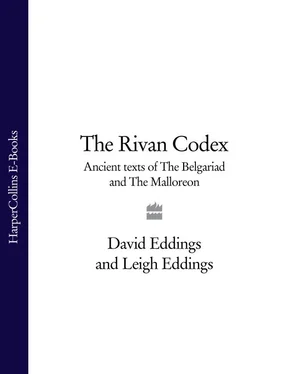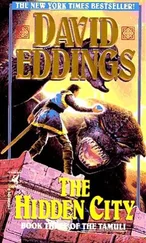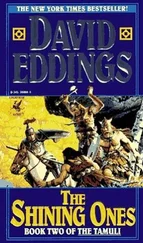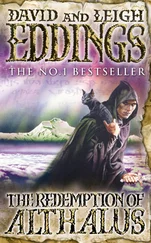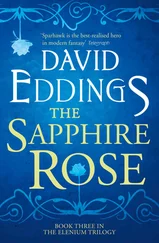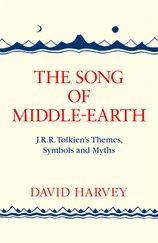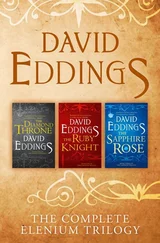The Rivan Codex
Ancient Texts Of The Belgariad And The Malloreon
David & Leigh Eddings

For Malcolm, Jane, Joy, Geoff and all the staff at HarperCollins.
It’s always a genuine pleasure to work with you. With all our thanks
DAVID & LEIGH
Cover Page
Title Page The Rivan Codex Ancient Texts Of The Belgariad And The Malloreon David & Leigh Eddings
INTRODUCTION
PREFACE: THE PERSONAL HISTORY OF BELGARATH THE SORCERER *
I THE HOLY BOOKS
THE BOOK OF ALORN *
THE BOOK OF TORAK
TESTAMENT OF THE SNAKE PEOPLE
HYMN TO CHALDAN
THE LAMENT OF MARA
THE PROVERBS OF NEDRA
THE SERMON OF ALDUR
THE BOOK OF ULGO *
II THE BISTORIES
AT TOL HOPELB 5368
THE EMPIRE OF TOLNEDRA
UNIVERSAL WEIGHTS AND MEASURES *
THE ALORN KINGDOMS
SENDARIA *
ARENDIA
ULGOLAND *
NYISSA
THE ANGARAK KINGDOMS
III THE BATTLE OF VO MIMBRE
BOOK SEVEN THE BATTLE BEFORE VO MIMBRE
AFTERWORD
INTERMISSION
IV PRELIMINARY STUDIES FOR THE MALLOREON
A CURSORY HISTORY OF THE ANGARAK KINGDOMS
V THE MALLOREAN GOSPELS
BOOK 1 THE BOOK OF AGES
BOOK 2 THE BOOK OF FATES
BOOK 3 THE BOOK OF TASKS
BOOK 4 THE BOOK OF GENERATIONS
BOOK 5 THE BOOK OF VISIONS
VI A SUMMARY OF CURRENT EVENTS 5376-5387
From the Personal Journal of King Anheg of Cherek *
AFTERWORD
By David Eddings
Copyright
About the Publisher
My decision to publish this volume was made in part because of a goodly number of flattering letters I’ve received over the past several years. Some of these letters have come from students at various levels, and to make matters worse, I’ve also received letters from teachers who inform me that they’re actually encouraging this sort of thing. Aren’t they aware that they’re supposed to wait until I’m safely in the ground before they do this?
The students, naturally, ask questions. The teachers hint around the edges of an invitation to stop by and address the class. I’m very flattered, as I mentioned, but I don’t write – or grade – term papers any more, and I don’t travel. To put it idiomatically, ‘I ain’t going no place; I been where I’m going.’
Then there are those other letters, the ones which rather bashfully confide an intention to ‘try writing fantasy myself’. I don’t worry too much about those correspondents. They’ll get over that notion rather quickly once they discover what’s involved. I’m sure that most of them will eventually decide to take up something simpler – brain surgery or rocket science, perhaps.
I’d more or less decided to just file those letters and keep my mouth shut. A prolonged silence might be the best way to encourage a passing fancy to do just that – pass.
Then I recalled a conversation I had with Lester del Rey on one occasion. When I’d first submitted my proposal for the Belgariad, I’d expected the usual leisurely reaction-time, but Lester responded with what I felt to be unseemly haste. He wanted to see this thing – now, but I wasn’t ready to let him see it – now. I was in revision of what I thought would be Book I, and since I was still doing honest work in those days, my time was somewhat curtailed. I wanted to keep him interested, however, so I sent him my ‘Preliminary Studies’ instead – ‘So that you’ll have the necessary background material.’ Lester later told me that while he was reading those studies, he kept telling himself, ‘There’s no way we can publish this stuff,’ but then he admitted, ‘but I kept reading.’ We were fairly far along in the Belgariad when he made this confession, and he went on to say, ‘Maybe when we’ve got the whole story finished, we might want to think about releasing those studies.’
Eventually, the two ideas clicked together. I had people out there asking questions, and I had the answers readily at hand since nobody in his right mind takes on a multi-book project without some fairly extensive preparation. My Preliminary Studies were right there taking up space, I’d just finished a five-book contract, and I had nothing else currently on the fire. All this thing needed was a brief introduction and some footnotes, and we were off to press. (Just in passing I should advise you that my definition of ‘brief’ and yours might differ just a bit. It takes me a hundred pages just to clear my throat. Had you noticed that? I thought you might have.)
Please bear in mind the fact that these studies are almost twenty years old, and there are going to be gaps. There are places where some great leaps occurred, frequently flowing out of the point of my pen during that actual writing, and I wasn’t keeping a diary to report these bursts of inspired creativity. I’ll candidly admit that probably no more than half of these ‘strokes of genius’ actually worked. Some of them would have been disastrous. Fortunately, my collaborator was there to catch those blunders. Trial and error enters into any form of invention, I suppose. This book may help others to avoid some of the missteps we made along the way, and it may give the student of our genre some insights into the creative process – something on the order of ‘connect wire A to wire B. Warning! Do not connect wire A to wire C, because that will cause the whole thing to blow up in your face.’
Now that I’ve explained what I’m up to here, let’s get the lecture out of the way. (Did you really think I’d let you get away without one?)
After I graduated from the US Army in 1956, one of my veteran’s benefits was the now famous GI Bill. My government had decided to pay me to go to graduate school. I worked for a year to save up enough for some incidentals (food, clothing, and shelter) and then enrolled in the graduate school of the University of Washington in Seattle. (A good day in Seattle is a day when it isn’t raining up. ) My area of concentration was supposed to be modern American fiction (Hemingway, Faulkner, and Steinbeck), but I had those Ph.D exams lurking out in the future, so I knew that I’d better spend some time with Chaucer, Shakespeare, and Milton as well. Once I’d mastered Middle English, I fell in love with Chaucer and somewhat by extension with Sir Thomas Malory.
Since what is called ‘Epic Fantasy’ in the contemporary world descends in an almost direct line from medieval romance, my studies of Chaucer and Malory gave me a running head start in the field. ‘Medieval Romance’ had a long and honorable history, stretching from about the eleventh century to the sixteenth, when Don Quixote finally put it to sleep. It was a genre that spoke of the dark ages in glowing terms, elevating a number of truly barbaric people to near sainthood. The group that is of most interest to the English-speaking world, of course, is King Arthur and his knights of the Round Table. There may or may not have been a real King Arthur, but that’s beside the point. We should never permit historical reality to get in the way of a good story, should we?
Since the issue’s come up, though, let’s take a look at someone who was historically verifiable and who had a great deal of impact on the fledgling genre in its earliest of days. The lady in question was the infamous Eleanor of Aquitaine.
Eleanor was related to five (count ‘em) different kings (or pseudo-kings) during the twelfth century.
Читать дальше
